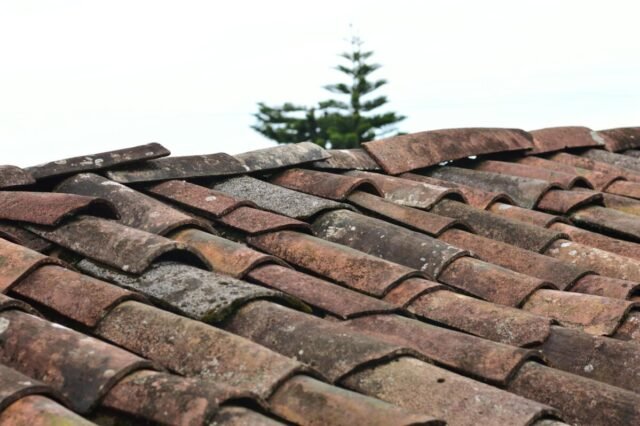A dripping ceiling, water stains on the wall, the pitter-patter of uninvited raindrops… a roof leak can send shivers down the spine of any homeowner. But before you succumb to despair, know this: fixing a roof leak doesn’t always require an emergency roofer and a hefty bill. With some basic knowledge, tools, and safety precautions, you can tackle many leaks yourself, saving money and experiencing the satisfaction of a DIY victory.
Why Address a Roof Leak Immediately?
Ignoring a roof leak is like ignoring a ticking time bomb. The longer it goes unaddressed, the more extensive the damage becomes. Water ingress can lead to:
- Structural damage: Rotting wood, weakened beams, and potential foundation issues.
- Mold growth: A health hazard that can exacerbate allergies and respiratory problems.
- Interior damage: Ruined walls, ceilings, and belongings.
- Higher repair costs: The longer you wait, the more extensive and expensive the repairs become.
By acting swiftly, you can minimize the damage and potential health risks, often saving yourself significant money in the long run.
Can You Fix the Leak Yourself?
Whether you conquer the leak yourself or call in the professionals depends on several factors:
- Leak complexity: Simple repairs like replacing shingles or sealing minor cracks are DIY-friendly. Complex leaks near chimneys, valleys, or involving extensive flashing work might require professional expertise.
- Your comfort level: Are you handy and comfortable working on ladders and heights? If not, seeking professional help is wise.
- Safety concerns: Working on a roof carries inherent risks. If you’re unsure about your safety or lack the proper equipment, prioritize your well-being and call a professional.
Sherlock Holmes Your Leak: Identifying the Culprit
Before tackling the repair, it’s crucial to locate the source of the leak. Grab your detective hat and head to the attic:
- Inspect for visible signs: Look for water stains, mold growth, or damp areas on the underside of the roof deck. These indicate the general leak location.
- Follow the trail: Trace the water stains upwards to pinpoint the exact entry point. Common leak suspects include:
- Shingles: Cracked, loose, or missing shingles are prime suspects.
- Flashing: This waterproof material seals around chimneys, valleys, and other roof protrusions. Damaged or improperly installed flashing can be a culprit.
- Valleys: The V-shaped intersections of two roof slopes are vulnerable to water accumulation and leaks.
- Chimneys: Gaps between the chimney and roof, or damaged mortar joints, can allow water infiltration.
- Simulate rain: If the leak isn’t readily apparent, enlist a helper. While you safely climb onto the roof with a garden hose, have your helper observe the attic for signs of water appearing. Systematically wet sections of the roof, starting from higher points, until the leak reveals itself.
Remember safety first! Ensure you wear proper footwear, use a sturdy ladder secured on level ground, and avoid power lines.
DIY Hero or Calling in the Cavalry: Repair Strategies
Once you’ve identified the leak’s source, it’s time to choose your repair approach:
DIY Champion:
- Shingle repair:
- Replacing: If the damage is minimal, carefully pry up the damaged shingle and replace it with a new one, ensuring proper overlapping and nailing.
- Patching: For small tears or cracks, use shingle repair cement or specialized patching materials following the manufacturer’s instructions.
- Flashing repair:
- Resealing: Reapply sealant around chimneys, valleys, and other areas with flashing using high-quality roof sealant.
- Replacing worn pieces: If the flashing is severely damaged or cracked, replace the affected sections with new flashing material.
- Leak around chimney:
- Seal gaps: Use high-temperature caulk or sealant to fill any gaps between the chimney and roof.
- Repair mortar joints: If the leak originates from cracked or crumbling mortar joints, repoint the chimney with appropriate mortar mix.
Professional Help:
For complex leaks, extensive flashing repairs, or if your comfort level dictates, don’t hesitate to call in a qualified roofer. They have the expertise, equipment, and safety measures to handle challenging situations.
Important Note: When using any repair materials, always follow the manufacturer’s instructions for proper application and safety precautions.
Preventative Measures: Be a Leak-Free Superhero!
The best way to deal with roof leaks is to prevent them in the first place. Here are some proactive steps you can take:
- Regular roof inspections: Schedule annual inspections by a qualified roofer or conduct your own visual inspections twice a year, once before winter and once after. Look for damaged shingles, loose flashing, clogged gutters, and any potential weak spots.
- Clean your gutters: Eliminate the opportunity for water to pool and seep under shingles by regularly cleaning your gutters and downspouts. Aim for cleaning at least twice a year, especially after heavy rain or snowfall.
- Trim overhanging branches: Trees close to your roof can pose a double threat. Falling branches can damage shingles, while leaves and debris can clog gutters and contribute to moisture buildup. Trim branches that hang over your roof, maintaining a safe distance.
- Address minor issues promptly: Don’t ignore small problems like cracked sealant or loose shingles. Addressing them early prevents them from turning into major leaks and costly repairs down the line.
- Consider professional maintenance: Depending on your roof type and age, investing in occasional professional maintenance can extend its lifespan and identify potential problems before they become leaks.
Tools and Materials for DIY Repairs: Be Prepared!
Having the right tools and materials on hand for small repairs can save you time and frustration when a leak strikes. Here’s a basic toolkit to consider:
- Sturdy ladder with proper safety features
- Roofing nails
- Hammer
- Utility knife
- Shingle repair cement or patching materials
- High-quality roof sealant
- Caulk gun
- Work gloves
- Safety glasses
Remember, safety first! Always wear appropriate safety gear when working on your roof.
Don’t let a leaky roof dampen your spirits. By understanding the basics of leak identification and repair, you can tackle smaller leaks yourself, saving money and gaining valuable DIY skills. However, remember to prioritize safety and seek professional help when necessary. By implementing preventative measures, you can become a leak-free superhero, ensuring your roof protects your home for years to come.































